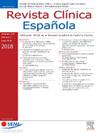实际患者与标准化医学学位患者的比较:一项随机对照干预研究
IF 1.7
4区 医学
Q2 MEDICINE, GENERAL & INTERNAL
引用次数: 0
摘要
模拟临床场景让学生在一个安全的环境中学习。虽然推荐标准化患者(SP)参与这些场景,但很少有研究比较SP和真实患者(RP)对医学教育的影响。方法每门课(第4、5、6课)选取40名医学生,按1:1的比例随机分为两组:RP和SP情景。学生和外部观察者不知道参与情景的患者类型。学生完成感知和知识问卷,负责的教授和外部观察者完成感知问卷。定性信息是通过与学生的焦点小组收集的。结果两组在认知和获得性知识方面差异无统计学意义,但在正确识别患者类型的概率方面差异有统计学意义(P <;.001):在有SP的情景中,大多数学生认为是RP。在教授和外部观察者的问卷调查中,各组之间没有发现差异。如果学生们相信他们面对的是RP,并且认为病人的反馈丰富了内容,无论病人的类型如何,他们都会准备得更充分,更投入。结论医学生在不同情境下对SP和RP的评价相似。鉴于具有不同病理和严重程度的PR的困难,SP是培养医学生的一个很好的选择。本文章由计算机程序翻译,如有差异,请以英文原文为准。
Comparación de pacientes reales y estandarizados en el Grado de Medicina: un estudio de intervención aleatorizado y controlado
Introduction
Simulated clinical scenarios allow students to learn in a safe environment. Although it is recommended that standardized patients (SP) participate in these scenarios, few studies compare the impact of SP and real patients (RP) on medical education.
Methods
Forty medical students per course (4 th, 5 th, and 6 th) were selected and randomly assigned (1:1) to two groups: a scenario with RP or SP. The students and the external observer were unaware of the type of patient participating in the scenario. The students completed questionnaires on perceptions and knowledge, and the responsible professors and external observer completed questionnaires on perceptions. Qualitative information was collected through focus groups with the students.
Results
No significant differences were found between both groups in perceptions and acquired knowledge, but there was a significant difference in the probability of correctly identifying the type of patient (P < .001): most students in the scenario with SP identified it as RP. No differences were found between groups in the professor and external observer questionnaires. Students were more prepared and involved if they believed they were facing a RP and considered the patient's feedback enriching, regardless of the type of patient.
Conclusions
Medical students do not differentiate SP from RP in scenarios and evaluate them similarly. Given the difficulty of having PR with diverse pathologies and severity levels, SP is a good alternative for training medical students.
求助全文
通过发布文献求助,成功后即可免费获取论文全文。
去求助
来源期刊

Revista clinica espanola
医学-医学:内科
CiteScore
4.40
自引率
6.90%
发文量
73
审稿时长
28 days
期刊介绍:
Revista Clínica Española published its first issue in 1940 and is the body of expression of the Spanish Society of Internal Medicine (SEMI).
The journal fully endorses the goals of updating knowledge and facilitating the acquisition of key developments in internal medicine applied to clinical practice. Revista Clínica Española is subject to a thorough double blind review of the received articles written in Spanish or English. Nine issues are published each year, including mostly originals, reviews and consensus documents.
 求助内容:
求助内容: 应助结果提醒方式:
应助结果提醒方式:


